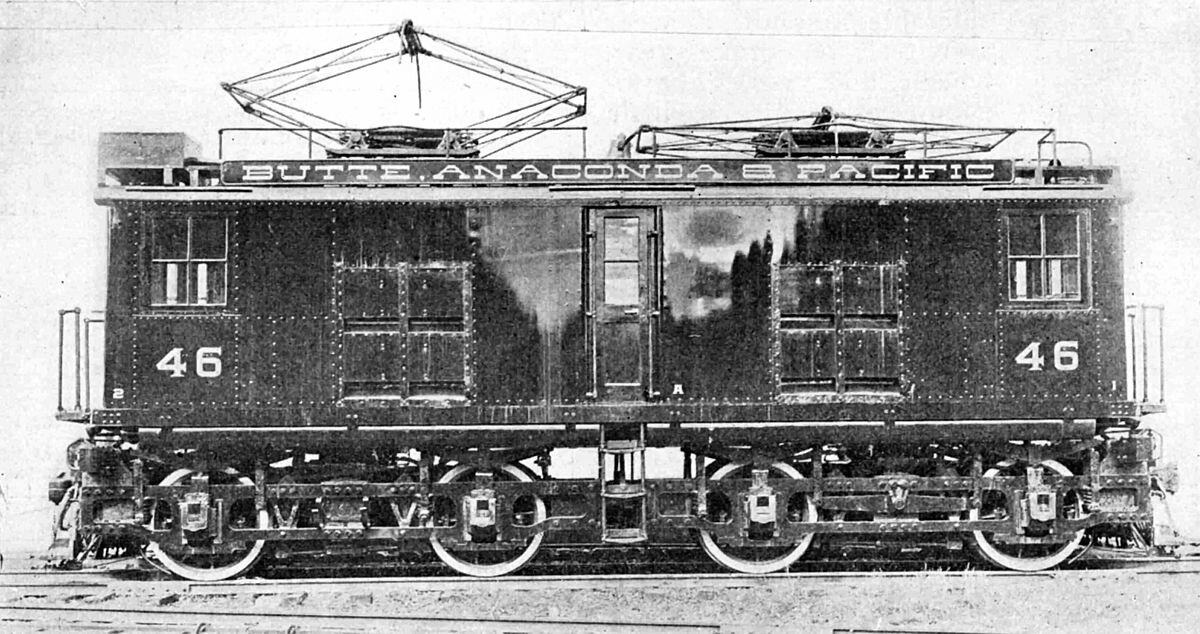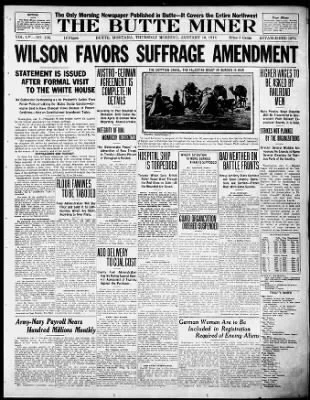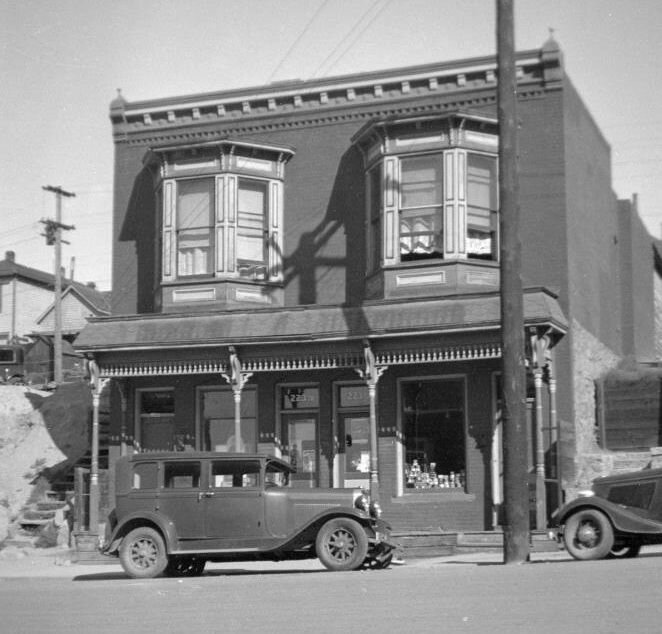
Butte, America’s Story Episode 140 -Post Offices
Butte City had a post office ten years before the city was incorporated. Anson Ford ran the office beginning July 20, 1868, in his drug store, and typically delivered 20 to 40 letters a week that came into Butte via stage coach or with random individual riders.

Butte, America’s Story Episode 139 - The Chimney Sweep
The beginning of the Christmas season in Butte in 1902 was also chimney-cleaning season. “It has been noticeable that there is a great rush to have the chimneys of the houses swept and thoroughly cleansed for the accommodation and comfort of the ever-welcome Santa,” according to the Anaconda Standard on December 21, 1902.

Butte, America’s Story Episode 138 - Mother Jones
Butte seems to attract the most dangerous women in the world – apparently meaning smart, articulate, progressive women fighting for causes they believed in. Carrie Nation, Emma Goldman, and Mother Jones were all called “the most dangerous woman in America” or the world at various times, and Butte saw them all.

Butte, America’s Story Episode 137 - Sheriff Furey
The union-supporting Butte Bystander newspaper cheered the election of James B. Furey as President of the Butte Miner’s Union in 1897. As they reported December 18, 1897, he was into his second term in “that important office,” re-elected with virtually no opposition. He ultimately served four terms as President of the Union.

Butte, America’s Story Episode 136 - Bidwell Brothers
Butte likes to say that every bad guy (and gal) that ever existed came to Butte and did something here. Billy the Kid, Bonnie and Clyde, Al Capone, Doc Holliday (he really was here), Attila the Hun. But in 1899, two of the most notorious international criminals of the 1870s did come to Butte. And they died.

Butte, America’s Story Episode 135 - Second Worst Mine Disaster
Twenty-one men were killed February 14, 1916, in a fire at the Pennsylvania Mine. The Pennsylvania stood at the eastern ends of Broadway and Park Streets, where Parrot Street intersected. That location is within the Berkeley Pit today, about 1,000 feet directly in front of the viewing stand on the rim, as you look across the pit.

Butte, America’s Story Episode 134 - Polygamy Alley
Often enough, they were just called “the alley between Granite and Quartz Streets” or something similar. But from about 1884-1887, Butte boasted a uniquely named alley: Polygamy Alley.

Butte, America’s Story Episode 133 - Rainbeau
It’s well known that Walkerville was named for brothers Samuel Sharp, Joseph, David, and Matthew Walker, Salt Lake City bankers and investors who were excommunicated from the Mormon Church. They brought Marcus Daly to Butte to manage the rich silver mines along the Alice Vein.

Butte, America’s Story Episode 132 - Stained Glass
As an upscale, well-to-do metropolis in the mountains, Butte was cutting edge in terms of its architecture, as well as the details that embellish so many of our buildings.

Butte, America’s Story Episode 131 - The First Big Fire
June 9, 1881, was a Thursday. At 1:15 in the morning, a fire of unknown origin (but assumed at the time to be the “result of carelessness”) broke out in the rear of Pettit’s Furniture Store on West Broadway. It was Butte’s first major fire, and within an hour five buildings were gone.

Butte, America’s Story Episode 130 - Butte City Charter
There isn’t much doubt that Butte was destined to become a city, but it did get off to a somewhat tenuous start. Following the decline of the original gold camp to fewer than 100 people in 1874, Butte boomed rapidly with the silver rush of the late 1870s.

Butte, America’s Story Episode 129 - Anaconda Smelter Stack
The Washoe Smelter stack in Anaconda is the tallest free-standing masonry structure in the world. Yes, it is. Historian Carrie Johnson laid to rest any technicalities and competition with the Washington Monument a few years ago.

Butte, America’s Story Episode 128 - When the Whiskey Froze
The winter of 1866-67 was a cold one in Butte. Actually, there wasn’t much “Butte” – the population as recalled by pioneer Charles S. Warren was fewer than 200, but the placer gold camp at Silver Bow down the creek from Butte still had perhaps 2,500 people, including “not more than 25 women and children,” according to Warren.

Butte, America’s Story Episode 127 - Bennett Blocks
In late 1888 Bennett Block #1 was constructed at Utah and Front. Willard Bennett lived in Deer Lodge but was owner of the building and Vice President of Bennett Brothers Co., a dealer in agricultural implements, carriages, wagons, and produce.

Butte, America’s Story Episode 126 - The BA&P Railroad
Like other capitalists and industrialists of the late 19th century, Marcus Daly understood well the value of vertical integration to his company – ownership or control of as many aspects of the business as possible.

Butte, America’s Story Episode 125 - C.E.R.A.
The Chinese Empire Reform Association (CERA) began in Victoria, British Columbia, in 1899, created by exile Kang Youwei. CERAs supported the short-lived reforms instituted by the Guangxu Emperor, who reigned 1875-1908, to modernize (and to some extent, Westernize) China.

Butte, America’s Story Episode 124 - Butte Miner Newspaper
The summer of 1876, America’s centennial, came to a Butte City that was growing rapidly from its low point just two years earlier. The new Centennial Brewery and Centennial Hotel were joined by Butte’s first regular newspaper, the Butte Miner.

Butte, America’s Story Episode 123 - Five Mile House
The highway out of Butte to the east went south, along what is now Harrison Avenue and ultimately over Pipestone Pass to Whitehall. The route was marked by inns – Mile Houses – at least at 4, 5, 9, 10, 11, and 18 miles from the heart of uptown Butte, the last one about five miles east of the Continental Divide.

Butte, America’s Story Episode 122 - The Coughlins
Julia Coughlin’s death at age 66 in 1929 ended the 45-year tenure by her family in the 200 block of East Granite, between Arizona and Ohio Streets, straight across from the Washington School. For nearly 30 years of that time, Julia ruled the household and the businesses there as a widow.

Butte, America’s Story Episode 121 - Skating Rinks
In 1884 Butte had at least two “official” indoor skating rinks. The fancy one at the northeast corner of Granite and Alaska – directly across Alaska from today’s Silver Bow Club Office Building – was a huge, 2-story 170-foot-long barn-like pavilion with a cement floor, and was initially an ice-skating rink.